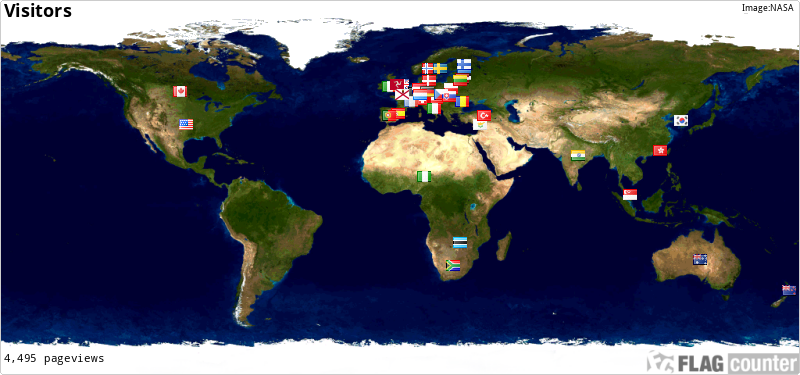
...
The learning point of this EarthCache is to get the geocacher to become familiar with the rock charnockite.
...
** (Igneous rocks: Igneous rocks are formed by the solidification of magma, a silicate liquid generated by partial melting of the upper mantle or the lower crust. Different environments of formation, and the cooling rates associated with these, create very different textures and define the two major groupings within igneous rocks.)
*** (Metamorphic rocks : These rocks get their name from the Greek words ‘meta’ and ‘morph’, meaning ‘change of form’. Metamorphic rocks are produced by the alteration of pre-formed rocks by pressure, temperature and migrating fluids, often in environments deep in the Earth’s crust. Because of the severe conditions which rocks undergo during metamorphism, the original minerals may become unstable and change to maintain equilibrium with the new environment. This can involve changes in mineralogy (recrystallization of existing minerals or formation of new ones) and usually changes in texture from the original rock.)
Charnockite is a granofels that is formed at high temperature and pressure, and contains *orthopyroxene, quartz, and feldspar. Being composed mainly by quartz, perthite or antiperthite and orthopyroxene. Charnockite is frequently described as an orthopyroxene granite. Granites are felsic rocks that usually contain no or very little pyroxene. There is actually an entire array of rocks that may contain orthopyroxene plus quartz. These rocks are collectively referred to as charnockitic rocks or charnockitic suite. All of these rock names refer to igneous rocks which makes it very logical to assume that charnockite is just an igneous rock with a somewhat unusual composition.
*(Orthopyroxene, any of a series of common silicate minerals in the pyroxene family. Orthopyroxenes typically occur as fibrous or lamellar (thin-plated) green masses in igneous and metamorphic rocks and in meteorites.)
Charnockites are found in high-grade metamorphic terranes (granulite facies). The transformation from the protolith to charnockite had probably no magma phase, which means that in most cases we are dealing with true ***metamorphic rocks which have nothing to do with the **igneous processes. Charnockitic rocks are sometimes described as granulites, but this term seems not to be very often used now a days. Most because it may and can be confused with metamorphic facies with the same name.
So is it a granite stone? The conclusion is no as the term “granite” isn’t reserved exclusively for igneous rocks. Some rocks that have been described as granites are almost certainly metamorphic rocks, although they lack obvious foliation. We have to tolerate the situation that not all granites are igneous rocks and therefore we have no basis to demand that charnockite shouldn’t be named granite anymore. However, if we want to use metamorphic terminology, then we should call it granofels. Charnockite is coarse-grained, and it lacks foliation. This is the definition of granofelsic metamorphic rocks.
The Ohio State University at Newark summarizes it up for us:
Charnockites are very high-grade metamorphic rocks. They straddle the boundary between igneous & metamorphic. Many charnockites have been given metamorphic and igneous names. The literature really doesn't provide a consistent definition of these rocks. And the understanding is that charnockites are dark-colored, very coarsely-crystalline, quartzo-feldspathic with pyroxene, and are very high-grade metamorphic rocks (or at the very least, intimately associated with very high-grade metamorphic terranes). Some charnockites have obvious foliation, while the foliation is subtle in other samples. Foliation is best seen in the black pyroxene component.
The Charnockitic rocks are commonly green. Both feldspars and orthopyroxene tend to have a greenish or brown hue and quartz crystals may contain rutile needles which gives them bluish tinge. Charnockites are formed at high pressures in almost water-free conditions. That’s why we see only small amounts of hydrous phases here (biotite, amphiboles) which are widespread in the rocks of amphibolite facies. So the Charnockites have a granitic composition according to the QAPF classification (see diagram under), but only because we do not use pyroxenes in this classification scheme.

Fig 1: Detailed geological map of the charnockitic zones adjacent to the Munster Suite at Palm Beach.
Fig 2: Locality map of Margate Terrane showing the distribution of Munster Suite and other charnockite varieties including the Oribi Gorge Suite and the Margate Granite thermal aureoles and fluid gradient charnockites. Also shown are the locations of detailed maps shown in Figs. 7 and 10. Note also the location of Marble Delta as well as the quarry location where fluid-driven charnockites are exposed.

QAPF diagrams are mostly used to classify plutonic rocks (phaneritic rocks).
To log this cache.
To get to log this cache you will have to visit and answer the questions which are related to the coordinates given the EarthCache.
When answers are collected, send them to CO for verification.
You can log immediately after answers are sent CO. If there are any questions about your answers CO will contact you.
Logs without answers to CO or with pending questions from CO will be deleted without any further notice.
Please do not include pictures in your log that may answer the questions.
Questions
1. Answer the questions under by visiting the Coordinates.

A. A-1) The rock you are looking at is the charnockite. Out from the examples above, what one is from gz? A, B, C or D? A-2) And what mineral would you say is the one that is most visible that you can see in the stone?
B. Is the Charnockite rock: very fine-grained, fine-grained, medium-grained, coarse-grained, large-grained?
C. By looking at the rock (gz), and the QAPF diagram (found in the text above). Would you say that you see a Feltic or a Mafic stone?
2. (It’s voluntary to post a photo in your online log of your visit)
Without revealing any answers!
